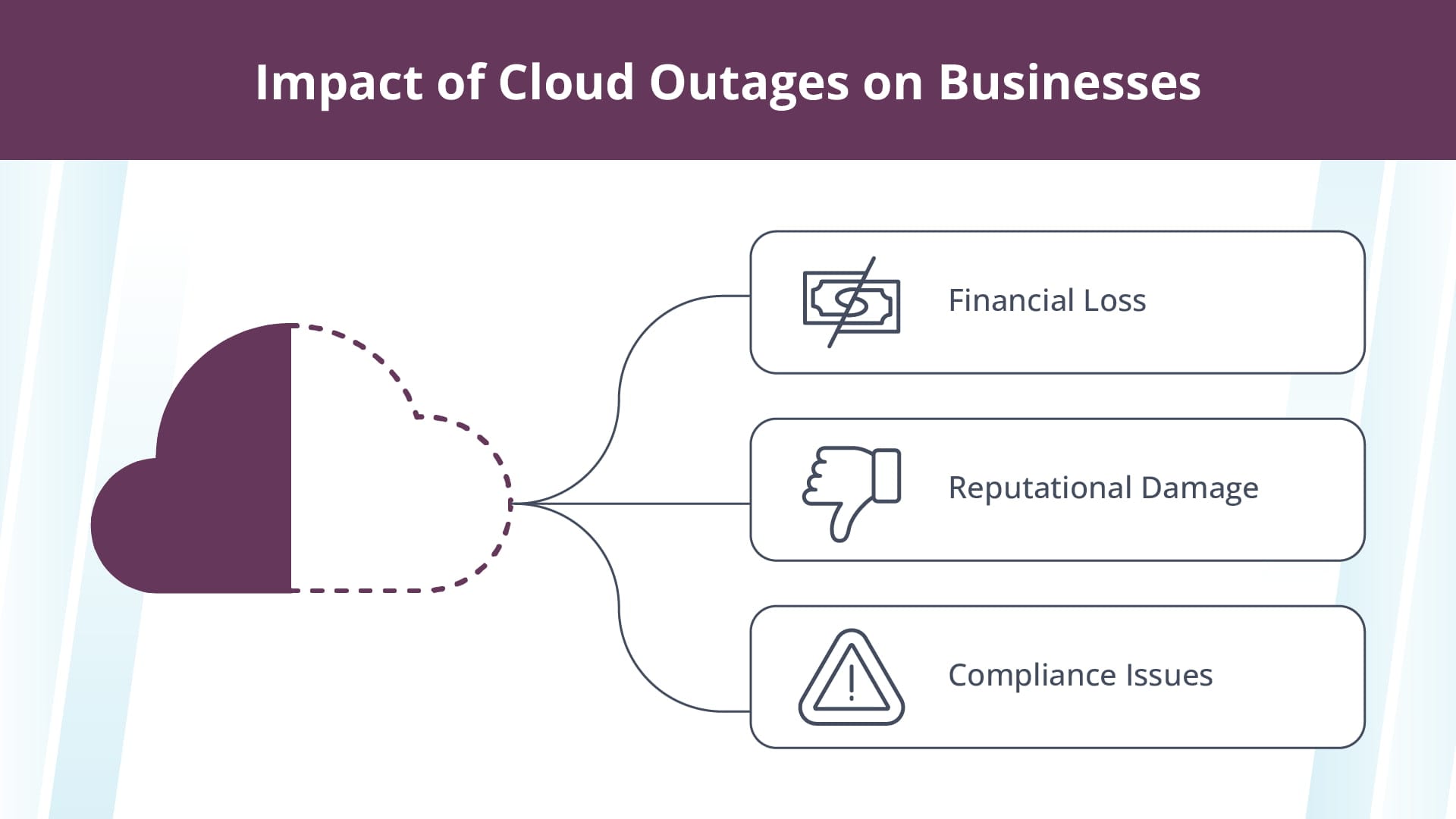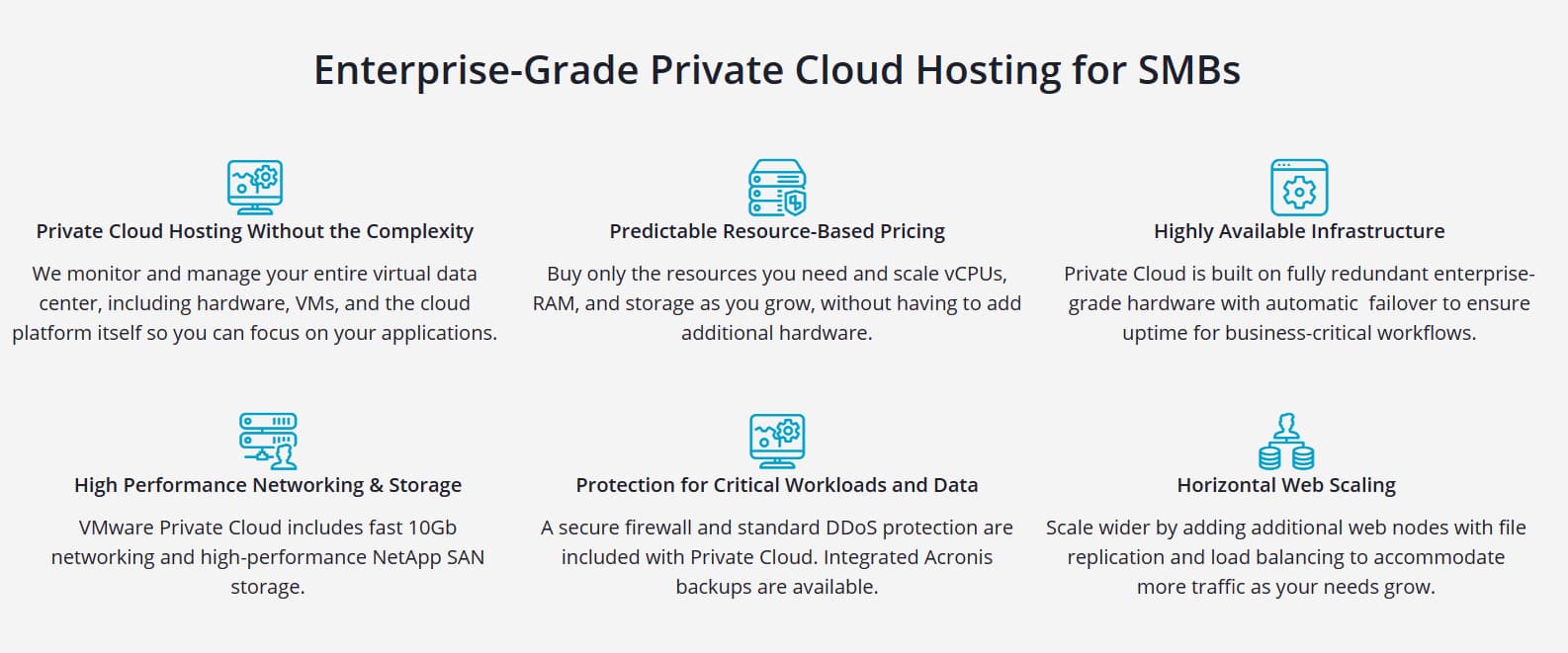The challenge of cloud outages: Reasons and solutions
With organizations turning to digitalization for growth, their spending on the cloud continues to rise. In fact, a 2023 Flexera report found that 45% of organizations will increase their cloud spending despite economic uncertainties.
Thanks to the flexibility of the cloud, organizations can make their businesses highly available and scale them up and down to meet changing demands.
That said, the cloud isn’t a magic wand. Instead, it’s a technology that virtualizes distributed physical servers and lets you use them for your business.
And as a result, it can fail — leading to a cloud service outage.
Let’s dig deeper into cloud outages and their impact, causes, and solutions.
Key points
- Cloud outages occur when cloud computing services become unavailable for a time.
- The impact of cloud outages on business can include financial loss, damaged reputation, and compliance issues.
- There are several things that can cause cloud outages, such as software bugs, cyberattacks, loss of power, natural disasters, and network issues.
- Ways to deal with cloud outages can involve using hybrid and multi-cloud hosting solutions, implementing monitoring systems, and leveraging global infrastructure.
What are cloud outages?
Cloud outages are periods when cloud computing services become partly or wholly inaccessible for users or organizations for a short time.
Since the cloud is based on multiple technologies working together to offer digital space on the Internet, cloud outages aren't limited to just a hard disk getting corrupted. Instead, outages find their roots in any cloud components failing to do their job.
Because of this, the end result of an outage can vary in severity, ranging from slow response times to total connection failure.
Impact of cloud outages on businesses
With the increased digital transformation of global businesses, cloud outages aren’t just offstage events. Instead, they cause major problems for any digital-focused companies by bringing their IT operations to a halt.

Financial loss
Whether you use the cloud to run your ecommerce store, operate your streaming platform, or host your online game, a cloud outage means lost revenue.
If end customers can’t access your business, you can’t make money off them.
Besides that, if you use the cloud to offer continuous service to your users, you may also need to provide refunds or credits if your uptime drops below your service level agreement (SLA).
In short, a cloud service outage means a significant loss to any modern business.
In fact, according to a 2023 Uptime Institute report, each downtime incident costs 70% of businesses more than $100,000.
Reputational damage
A cloud outage prevents customers from using your service. And if it happens rather frequently, it stops them from doing what they want and benefitting from your service.
For instance, if you use the cloud to offer website hosting, a cloud outage means downtime for customers’ websites — including blogs, business websites, and online stores.
And since such downtime would affect their businesses, they would share their negative experiences via online reviews, social media, and word of mouth and affect your reputation.
In short, frequent cloud outages negate your marketing efforts and put your brand in a bad spotlight.
Compliance issues
A down cloud doesn’t just mean a disruption of service. You’ll also need to consider how it affects compliance.
For instance, if you do business in the EU and collect customer data, the General Data Protection Regulation (GDPR) recommends you store and process their data within the EU. So, if a cloud outage affects your storage, you must have a backup storage and processing solution within the EU to take over to comply with GDPR.
Causes of cloud outages
Cloud outages can happen for a variety of reasons since the cloud is a combination of several technologies, from physical hardware to software-based load balancers. That said, common troublemakers include software bugs, security issues, natural disasters, power shutdowns, and network issues.
Software bugs
The cloud relies on software-based solutions throughout its infrastructure. To start, the virtualization of physical servers itself relies on virtualization software. Similarly, many APIs, security tools, and configuration management software are in the mix.
If they all work well, you won’t notice them. That said, even a seemingly minor software bug can bring them to the spotlight if they end up breaking the cloud.
For example, Fastly, a U.S.-based content delivery network (CDN), suffered a cloud outage due to a software bug on June 8, 2021, that caused a massive spike in CPU usage and brought down a major portion of its network.
Security issues
While the cloud shifts the target on your back to your cloud provider, cybersecurity still remains a priority since attacks can affect the cloud infrastructure.
For instance, while it’s rare, you can encounter security incidents like data leaks, database vulnerabilities, and DDoS (Distributed Denial-of-Service) attacks due to misconfigurations or external hacking attempts.
An example of this is when Microsoft Azure suffered a DDoS-based external attack by Storm-1359 in early June 2023, which resulted in the temporary unavailability of several services.
Power shutdown
Despite power backups, the absence of electricity remains a top reason for cloud service outages. In fact, according to the 2023 Uptime Institute report, power shutdowns caused 44% of the most impactful cloud outages for different organizations.
The situation with public cloud providers is no different. Their data centers have also suffered outages due to the loss of electricity. For instance, Amazon Web Services (AWS) had its Availability Zone 1 (AZ1) go down for 20 minutes due to a power outage on July 28, 2022, which affected end customers for up to three hours.
Natural disasters
Earthquakes, tsunamis, and cyclones aren’t out of the question, either. A natural disaster can directly or indirectly (via power shutdowns) cause a cloud outage, as well.
And it’s not just major natural disasters. Google Cloud Platform (GCP) suffered a cloud outage on April 25, 2023, due to a fire in its Paris data center. GCP’s europe-west9-a suffered a multi-cluster failure as the fire department soaked the building with water.
Network issues
Last but not least, since cloud infrastructure lives on the Internet, poor network situations can also lead to cloud outages — this typically happens if a submarine cable gets cut.
For instance, two simultaneous fiber cuts on June 7, 2022, affected GCP in the Middle East, Europe, and Asia for more than three hours. Customers had to bear with increased packet loss and higher latency.
Ways to manage cloud outages
While you can’t prevent natural disasters, you can take certain measures to mitigate and bypass cloud outages.
Turn to hybrid and multi-cloud
If you want to mitigate a cloud service outage, redundancy is the name of the game. Instead of having your business rely on a single point of failure, support it with multiple failover mechanisms that can take over during an outage.
Hybrid cloud and multi-cloud are two of the best ways to do that.
In a hybrid cloud, you use both a private and a public cloud to run your IT operations. So, even if the public cloud goes down, your core business stays unaffected, and you can also comply with the relevant regulations without any issues.
In fact, in a 2022 Cisco survey of 2,577 IT decision-makers, 73% of respondents relied on hybrid cloud for backup and disaster recovery operations.
If you’re looking for a hybrid cloud solution, check out Liquid Web’s VMware Private Cloud. It comes with fully redundant hardware, DDoS protection, and automatic failover — at a predictable, affordable price.

On the other hand, multi-cloud lets you use multiple public clouds together. Instead of using one service provider, you can use two or more public clouds to avoid a single point of failure in your cloud infrastructure.
Implement monitoring systems
Cloud outages don’t always lead to immediate shutdown of services. Instead, you might encounter a variety of outages, ranging from missed requests to queries taking longer than usual.
So, keep an eye on your cloud solution via monitoring systems to observe such anomalies before they affect the end user.
Leverage global infrastructure
Natural disasters are bound to occur. That said, you can distribute your IT infrastructure in multiple locations to avoid the effects.
In other words, instead of serving your global users with a single cloud solution location, consider getting backup solutions in the U.S. and elsewhere. For instance, Liquid Web offers VMware Private Cloud in our U.S. Central and U.S. West data centers.
Similarly, if you serve customers in Europe, you can get multiple cloud locations in the EU to comply with the GDPR even if a location goes down.
Final thoughts: Cloud outage — Causes and solutions in 2024
With modern businesses relying on artificial intelligence, machine learning, and automation workloads, a cloud outage is the last news an IT professional wants to hear.
That said, with lots of moving pieces in the cloud, a service outage isn’t something you can prevent.
But you can definitely manage it by opting for private cloud solutions that practice redundancy just the way you want it. If you’re looking for a solution that comes with redundant enterprise-grade hardware, consider Liquid Web’s VMware Private Cloud.
As a bonus, you’ll also get to work with Liquid Web’s Most Helpful Humans In Hosting, who’ll help you sail through any cloud outage unscathed.
Related Resources
Keep up to date with the latest Hosting news.



